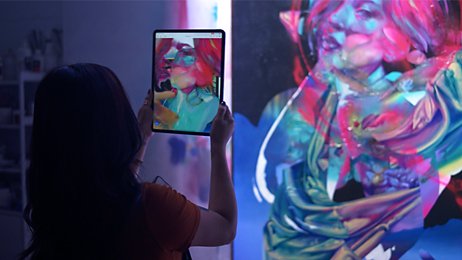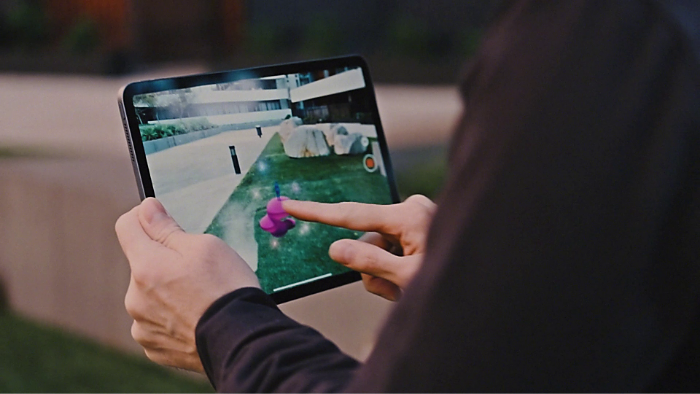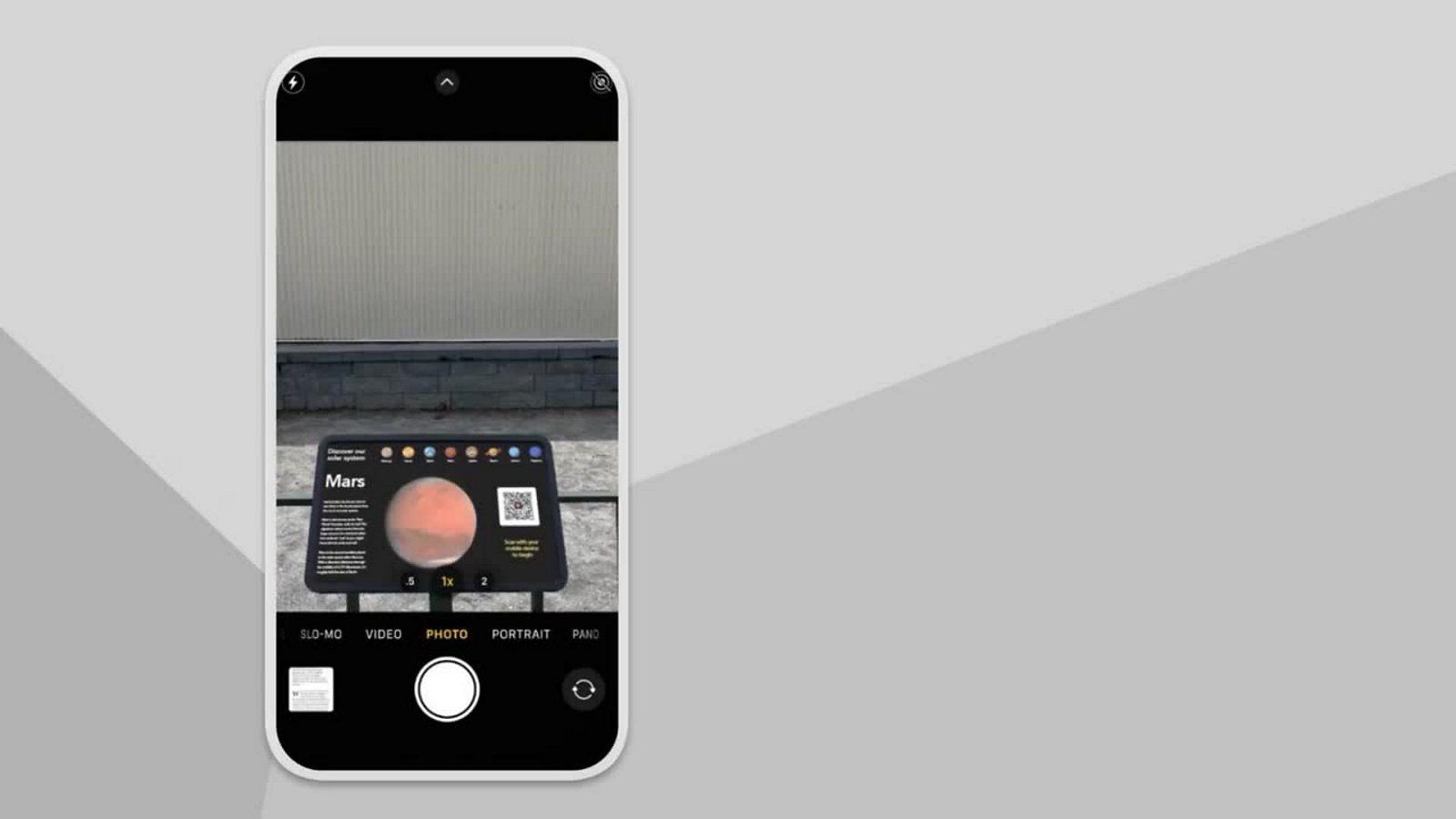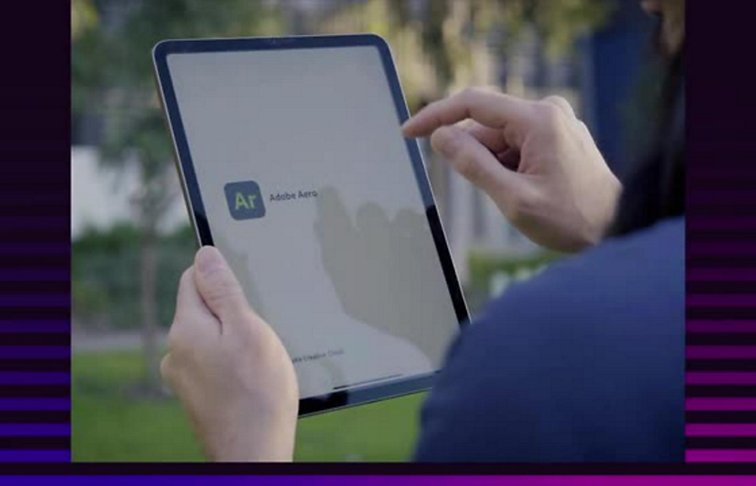Το Adobe Aero είναι ο πιο διαισθητικός τρόπος δημιουργίας, προβολής και κοινής χρήσης εμβυθιστικών εμπειριών επαυξημένης πραγματικότητας. Διαθέσιμο σε iOS και ως δημόσια beta για υπολογιστές με macOS και Windows.

Eπαυξημένη πραγματικότητα. Είναι όλα όσα φανταστήκατε.
Η επαυξημένη πραγματικότητα γεφυρώνει τον φυσικό με τον ψηφιακό κόσμο.
Δημιουργήστε διαδραστικές εμπειρίες με επίγνωση του χώρου για τα αγαπημένα μέρη σας.
Δεν απαιτείται να γράψετε κώδικα, ωστόσο απαιτείται να έχετε φαντασία.
Ξεπεράστε τα φίλτρα και δημιουργήστε ελκυστικές ιστορίες AR.
Εξερευνήστε τις δυνατότητες για βαθιά εμβυθιστικές και διαδραστικές εμπειρίες επαυξημένης πραγματικότητας.

Υλοποιήστε γρήγορα το όραμά σας στην AR.
Είτε είστε νέοι στην επαυξημένη πραγματικότητα είτε έμπειροι επαγγελματίες, το Aero είναι διαισθητικό στη χρήση και εύκολο στην κοινή χρήση. Δημιουργήστε διαφοροποιημένες εμπειρίες για πολλούς κλάδους και περιπτώσεις χρήσεις, από εικονικά εκθέματα έως ζωντανές αφίσες.
Άμεσο Aero. Για κάθε επαυξημένη πραγματικότητα.
Ο καθένας μπορεί να δει τα έργα σας χωρίς να χρειάζεται να κατεβάσει κάποια εφαρμογή. Η διανομή της εργασίας γίνεται πολύ εύκολα με την κοινοποίηση ενός κωδικού QR που ξεκινά την AR σε έξυπνες συσκευές.
Το Aero ζωντανεύει τα μουσειακά εκθέματα.
Δείτε πώς το Aero ενεργοποιεί την AR, συμπεριλαμβάνοντας αυτήν την εμπειρία σε ένα εθνικό μουσείο που υποστηρίζεται από τα Ηνωμένα Έθνη.






Το Aero ζωντανεύει τα μουσειακά εκθέματα.
Δείτε πώς το Aero ενεργοποιεί την AR, συμπεριλαμβάνοντας αυτήν την εμπειρία σε ένα εθνικό μουσείο που υποστηρίζεται από τα Ηνωμένα Έθνη.
Δημιουργήστε, αλληλεπιδράστε και βιώστε σε AR για κινητά με το σύστημα Aero.
Το σύστημα Aero συνδέεται μέσω του Creative Cloud ώστε να μπορείτε να δημιουργήσετε το έργο σας στην εφαρμογή για υπολογιστή για macOS ή Windows και, στη συνέχεια, να δοκιμάσετε, να αλληλεπιδράσετε και να βιώσετε το έργο σας στη δική σας συσκευή iOS. Πραγματοποιεί επίσης απρόσκοπτη εισαγωγή από τα Adobe Photoshop, Illustrator, Substance 3D, ή από εφαρμογές τρίτων κατασκευαστών.
Προσαρμόστε την πραγματικότητά σας.
Το Aero θέτει την ισχύ της δημιουργίας AR στη διάθεσή σας. Συνδυάστε στοιχεία 2D, 3D και ήχου για πολυμεσικές εμπειρίες.
Προσθέστε διαδραστικότητα εύκολα.
Προσθέστε εναύσματα όπως έναρξη, αφή και εγγύτητα για να ξεκινήσετε ενέργειες για τα στοιχεία σας. Στη συνέχεια, αντιστοιχίστε σχετικές συμπεριφορές όπως η κίνηση, η περιστροφή και η αναπήδηση για να ζωντανέψετε τις εμπειρίες σας.
Ορίστε διαδρομές για τις κινήσεις σας.
Σχεδιάστε κινήσεις και κατευθύνετε αντικείμενα εκεί που θέλετε να μεταβούν, σχεδιάζοντας μια διαδρομή στον χώρο με την κινητή συσκευή σας.
Προσθέστε νέο βάθος στα αρχεία σας PSD.
Δείτε τα γραφικά σας από μια άλλη προοπτική, εισάγοντας τα επίπεδα των PSD σας στο Aero και κατανέμοντάς τα δημιουργικά για να προσθέσετε βάθος.
Προσθέστε συνοπτικό χωρικό ήχο σύντομης μορφής.
Εισαγάγετε, διαχειριστείτε και αλληλεπιδράστε με ηχητικά στοιχεία (WAV και MP3) και κάντε τις εμπειρίες σας πιο διαδραστικές με ήχους που μπορούν να εκκινηθούν μέσω εγγύτητας.
Δείτε τι κάνουν οι δημιουργοί στο Adobe Aero.
Η δύναμη της AR με τον Luke Choice - 1 από 2
Στο παρασκήνιο της τέχνης AR: Mat Voyce
Ζωντανέψτε τις εικόνες σας με τον Michael Fugoso - 1 από 2
Στο παρασκήνιο της τέχνης AR: Alice Yuan Zhang
Το Adobe Aero είναι η μοναδική ολοκληρωμένη πλατφόρμα δημιουργίας και προβολής επαυξημένης πραγματικότητας (AR) που διευκολύνει τους σχεδιαστές και τους προγραμματιστές στη σχεδίαση, τη συνεργασία και τη δημοσίευση διαδραστικών εμβαθυντικών εμπειριών στον πραγματικό κόσμο.
Για να μάθετε περισσότερα σχετικά με το Aero, ανατρέξτε στην ενότητα "Τι είναι το Adobe Aero".
Το Adobe Aero είναι δωρεάν, ωστόσο θα πρέπει να δημιουργήσετε ένα αναγνωριστικό σύνδεσης.
Ναι, μπορείτε να δημιουργήσετε εμπειρίες AR με δυνατότητα προβολής σε κινητές συσκευές.
Ναι το Adobe Aero είναι δωρεάν, ωστόσο θα πρέπει να δημιουργήσετε ένα αναγνωριστικό σύνδεσης.
Ναι, η εφαρμογή Aero για κινητές συσκευές (iOS) και η εφαρμογή beta για υπολογιστές (macOS και Windows) έχουν παρόμοιες δυνατότητες όσον αφορά τις λειτουργικές δυνατότητές τους. Η εφαρμογή για κινητές συσκευές κάνει δυνατή τη δημιουργία AR μέσα σε AR με την πρόσθετη προβολή περιβάλλοντος της μπροστινής κάμερας.
Το Aero για υπολογιστή δεν παρέχει τη δυνατότητα για προβολή AR μέσα σε AR σε πραγματικό χρόνο, καθώς οι περισσότεροι υπολογιστές δεν διαθέτουν μπροστινή κάμερα. Η εφαρμογή για υπολογιστές όντως σάς παρέχει μεγαλύτερο έλεγχο για την τοποθέτηση και την προσθήκη πολύπλοκων αλληλουχιών διαδραστικότητας σε αντικείμενα στη σκηνή σας. Το περιβάλλον για υπολογιστές παρέχει επίσης απευθείας πρόσβαση σε περιεχόμενο που έχει προετοιμαστεί σε άλλες εφαρμογές για υπολογιστές.
Οι θεατές δεν χρειάζεται να εγκαταστήσουν κάποια συσκευή. Οι θεατές που διαθέτουν πρόσφατες συσκευές iOS μπορούν να βλέπουν περιεχόμενο στην εφαρμογή κλιπ Aero χωρίς να χρειάζεται να εγκαταστήσουν κάποια εφαρμογή πρώτα.
Στους θεατές που κάνουν εκκίνηση (ή αλλιώς "επίκληση") του κλιπ εφαρμογής χρησιμοποιώντας μία από τις υποστηριζόμενες επικλήσεις εμφανίζεται μια κάρτα κλιπ εφαρμογής στην οθόνη τους και μπορούν στη συνέχεια να ανοίξουν την εμπειρία στο κλιπ εφαρμογής Aero.
Μπορείτε να εισαγάγετε τις δικές σας φωτογραφίες, αρχεία με επίπεδα, ήχο ή άλλο περιεχόμενο 2D ή 3D. Το Aero βελτιστοποιεί τα στοιχεία PSD, JPEG, OBJ, GLB, FBX (σε υπολογιστή), GIF, PNG Sequence, WAV και MP3 για AR. Μπορείτε επίσης να εισαγάγετε στοιχεία από το Adobe Photoshop, το Illustrator και το Substance 3D Stager.
Μπορείτε να μοιραστείτε τις εμπειρίες AR που δημιουργείτε στο Aero με ενδιαφερόμενους και αναθεωρητές, χρησιμοποιώντας μία ή περισσότερες από τις ακόλουθες επιλογές:
- Γρήγορος σύνδεσμος (συμπεριλαμβάνει τον κωδικό QR)
- REAL
- Εικόνα ή βίντεο
Για να μάθετε περισσότερα σχετικά με τον τρόπο συνεργασίας με άλλους με σκοπό την επεξεργασία των εμπειριών σας AR, ανατρέξτε στις ενότητες Κοινή χρήση των δημιουργιών σας AR και Συνεργασία με άλλους στα έγγραφα του Adobe Aero.
Δημιουργικότητα για όλους.
Φωτογραφία, βίντεο, γραφιστική, εικονογράφηση και πολλά ακόμα. Ό,τι χρειάζεστε, όπου σας πάει η φαντασία σας.













